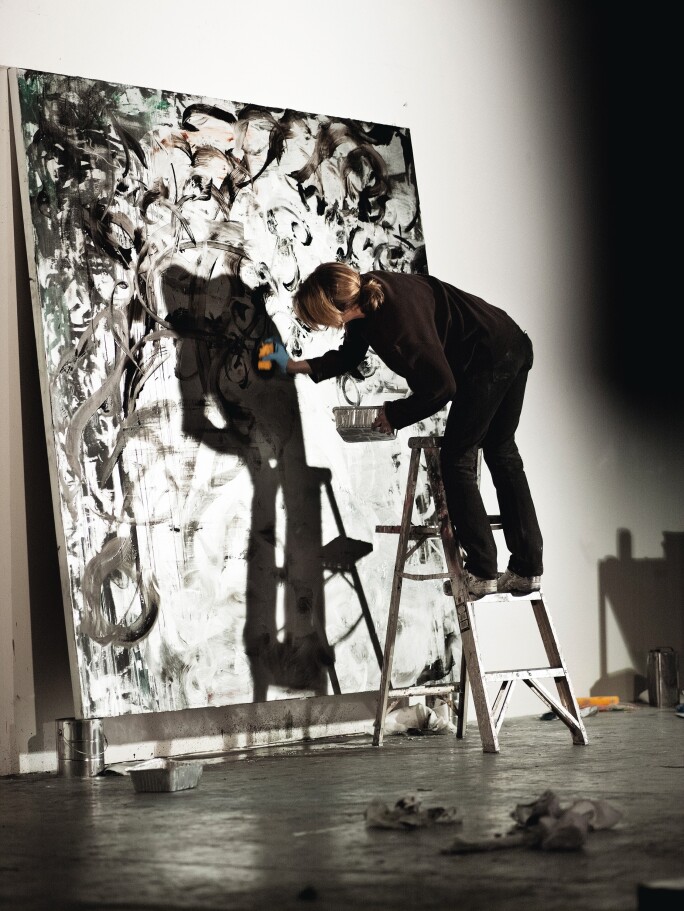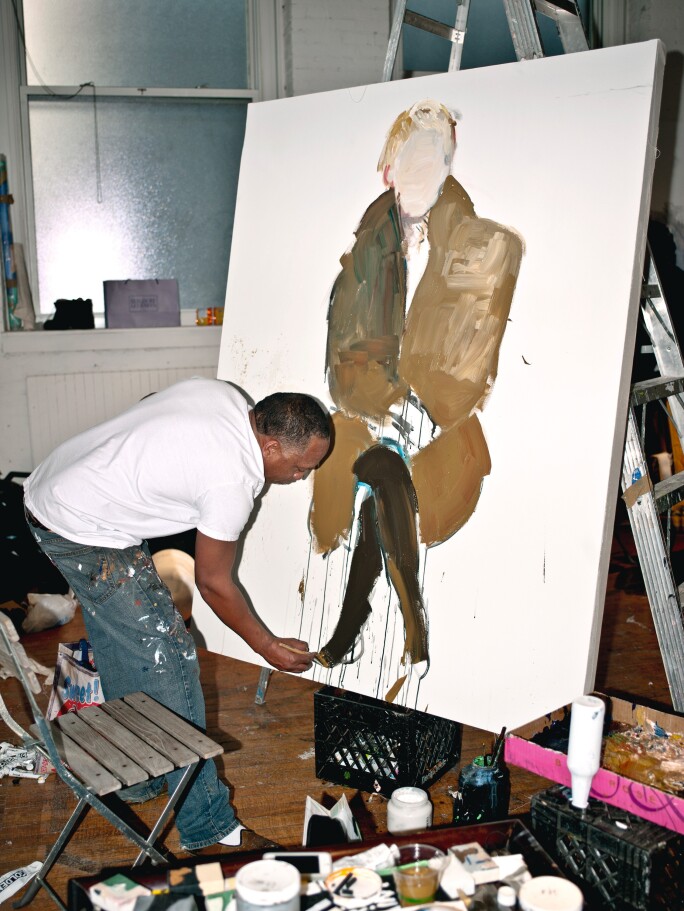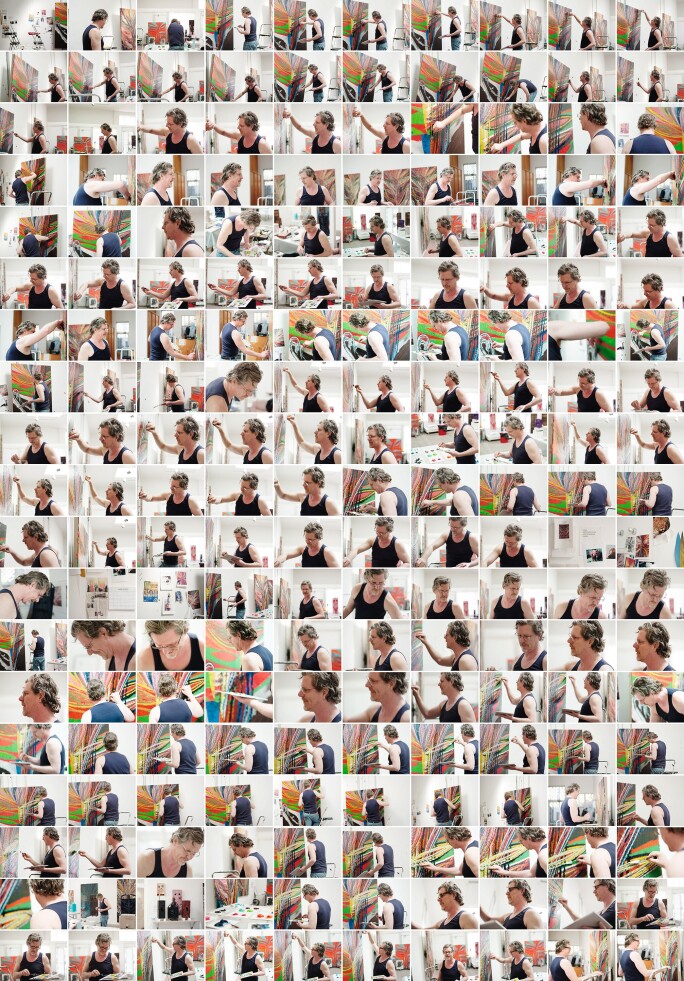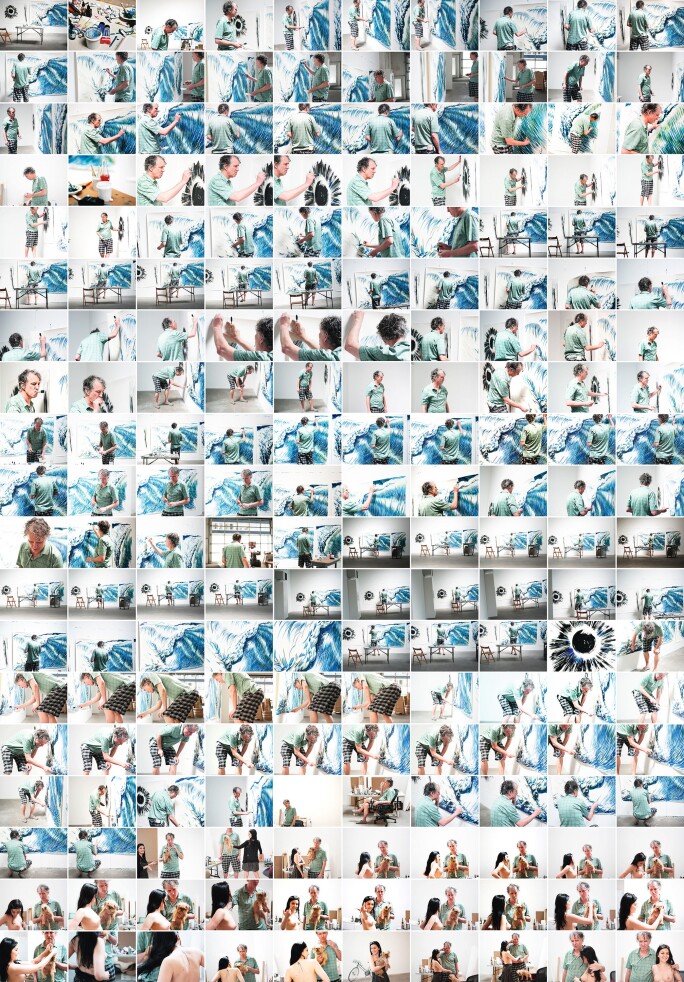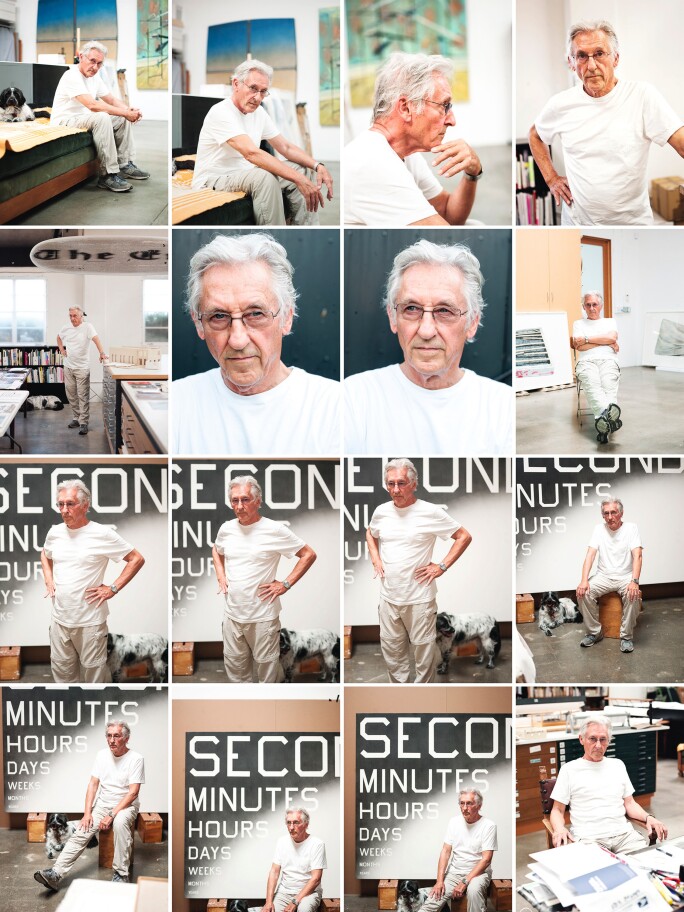S otheby's is pleased to present a selection of six new, limited edition works by Aubrey Mayer featuring artists Jacqueline Humphries, Mark Grotjahn, Raymond Pettibon, Ed Ruscha, Henry Taylor and Jonas Wood in their studios.
I’ve been taking photographic portraits of other artists for the last 15 years. As the body of work has expanded, I began to see it as a double portrait and my archive as source material to explore my own interests as an artist. Along those lines, the contact sheet format became an interesting way for me to make a portrait using multiple images. The rhythmic repetition of the contact sheets references Painting and Warhol.
Over the past decade, self-taught artist and photographer Aubrey Mayer has captured through his camera the twentieth century’s leading contemporary artists in their working environments. Through frequent bi-coastal studio visits with artists ranging from Christopher Wool to Henry Taylor, Mayer’s photographs document the current cultural moment in art.
Printed on aluminum, paper, linen and occasionally in the form of unique monographs, Mayer’s photographs depict remarkable moments in contemporary art, whether it be Mark Grotjahn putting palette knife to cardboard or Jacqueline Humphries reworking the upper reaches of a gestural canvas.
His visual archive provides an intimate look into the life and work of these artists in their ateliers, offering a greater understanding of their processes and personalities. Mayer’s multi-image compositions, referred to as “contact sheets,” animate the traditional portrait format detailing the stages of creation and artist's movements. Mayer turns the artist portrait into a formal act, engaging with a storied legacy of artist and photographer relationships.
From David Douglas Duncan’s portraits of Pablo Picasso in his La Californie studio to Hans Namuth’s depiction of Jackson Pollock with brush and bucket in hand to Horst P. Horst’s portrayal of Cy Twombly in his Roman apartment, such images have helped to shape the way we think about history’s most significant artists and art movements.
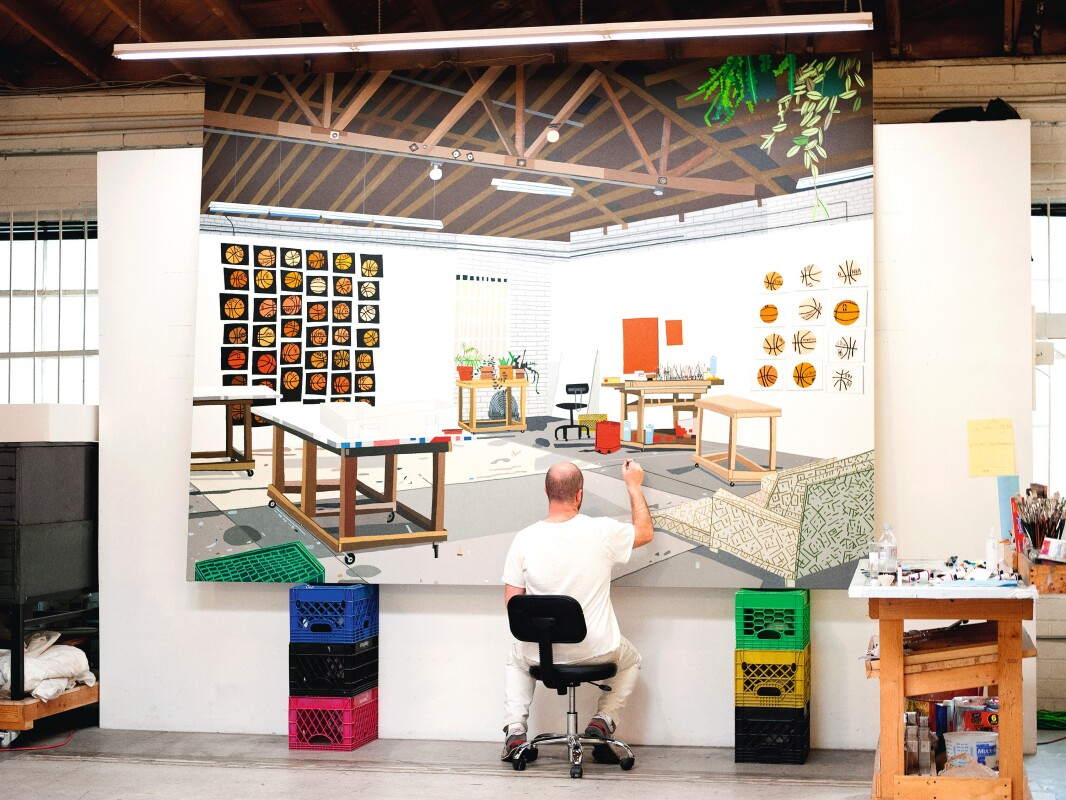
Mayer’s photographs invite further consideration of an artist’s practice and the elements that contribute to the art itself; the studio atmosphere, the chosen brush, the coffee mug, the pet dog. These illuminating, photographic encounters present a rarefied glimpse into the people behind the paintings.
